Toyota Yaris Sedan Vs. Honda Fit Vs. Hyundai Accent GLS Sedan Vs. Nissan Versa Sedan 1.6 Vs. Chevrolet Aveo5: Sub-Compact Shootout

Fun, fuel-efficient and inexpensive are just a few of the adjectives that describe the ideal sub-compact car. But often these little runabouts also get tagged with some less than glamorous terms like: cramped, cheap and slow.
In search of the ideal sub-compact we gathered together five of the least expensive and most fuel efficient cars on the market to compare them head-to-head and determine which car has it all.
The sub-compact category is one of the fastest growing segments in the automotive industry. Some of this has to do with temporary spikes in demand caused by things like high gas prices or a little phenomenon known as the worldwide economic downturn. Then there are more permanent issues like the ever-increasing concern for the environment.
So along with good fuel-economy, we’re looking for cars that appeal to this segment’s key demographic, namely younger college-types. So the winner will have to be easy on the wallet, fun to drive and have plenty of style. We also judged the competitors on things like cargo room, comfort, ergonomics and even the design of the interior.
The competitors are: the Chevrolet Aveo5, Honda Fit, Hyundai Accent GLS Sedan, Nissan Versa Sedan 1.6 and Toyota Yaris Sedan. For the purposes of this comparison we listed the Base price for all five vehicles as the lowest price offered by the manufacturer for the model with both air conditioning and an automatic transmission.
Hyundai Accent: 5th Place – 98 of 140 Points
Sadly for Hyundai, the Accent did not fare so well in our comparison. The sportier SE hatchback model would no doubt have scored higher, but none were available at the time of our test and the significantly higher MSRP would have dragged the car down in the price category.
What the four-door GLS model lacks is youth appeal. The exterior design is uninspiring and the drive is equally dull. Handling and steering feel are not strong suits for this car either. Acceleration is equally as unexciting with the little 4-door taking the longest time to hit 60 mph of any of the competition at 10.1 seconds. This surprised us a little as the Accent has more horsepower than most of its competitors. A positive surprise was the Accent’s braking, as it ties the Yaris for the shortest distance from 60 mph.
Like all but one other competitor, ABS is optional. The Accent does score well in the safety department with six standard airbags and a tire pressure monitoring system.
Inside the car is reasonably comfortable and we like its simple and easy to read and use gauges and controls. Much of the cabin, including things like the HVAC controls, are much nicer than in the Aveo, Yaris or Versa. The two-tone dash is also a nice touch.
The seats are comfortable and we really liked the driver’s arm rest.
Air conditioning is standard, although not much else is. Power options like windows, mirrors and locks are available in a package with remote keyless entry and cruise control. Tilt steering is also included in that package, which really ought to be standard.
Additional options are almost non-existent, with a six-speaker stereo system (in place of the standard 4-speaker unit) pretty much the only item. Navigation? Forget about it.
In terms of additional space, the rear seat area is the tightest of the group, although it will fit some adults. Fit, finish and materials are quite good on the Accent, with an overall look and feel above cars like the Yaris or Aveo.
A pioneer in the sub-compact segment, the Accent is still a great example of how a sub-compact car doesn’t have to be a cheap car. It’s actually well put together, but lacks excitement. Its two best traits are easily price and fuel-economy at 26/35 mpg (city/highway) with the automatic transmission.
Nissan Versa: 4th Place – 100 of 140 Points
After tallying all the numbers, we were surprised to see Nissan’s Versa so close to the bottom in our comparison. The car’s result is particularly shocking when you consider how large, roomy and comfortable it is.
Our tester had the entry-level 1.6-liter 4-cylinder engine, with all the benefits and drawbacks that entails. On the plus side, there’s the price. Rated a perfect 10 by our group of reviewers, the Versa can be had for just $11,990 (including A/C and an automatic transmission). That price bests even the Accent by $2,000.
Nissan created the Versa 1.6 specifically for the purpose of marketing and attracting bargain hunters. Unfortunately, 1.6 models aren’t available with much of anything as power options only come on the more expensive 1.8-liter model. There’s no available cruise control and the base Versa 1.6 doesn’t even come with a stereo system – that’s a dealer installed option.
As for items like navigation, a sunroof, aluminum wheels or steering wheel-mounted audio controls – forget it.
About the only thing you can add-on to the base Versa is ABS brakes. And even then, the result is below average with the car taking 133 feet to stop from 60 mph. Other safety features are quite good, however, with six airbags and a tire pressure monitoring system.
In terms of acceleration, the 1.6-liter Versa hits 60 mph in 9.2 seconds, tying the Yaris in the middle of the pack. We did expect better fuel-economy from the econo-box 1.6 model, but it gets 26/34 mpg – one of the lowest in our comparison.
The drive isn’t overly exciting and there’s plenty of body roll in the chassis.
As you might expect with such a soft suspension setup the ride is comfortable. As are the seats. If we had to drive long highways distances and that’s it, this might just be our pick. The seats even get a nice microfiber upholstery and will make you feel like you’re at home on your couch. And as for rear seat room, it was easily the most spacious of the group.
What may have done the Versa in, however, is its design. Generally agreed upon to be the least attractive of the five, it’s tall and narrow body just looks out of proportion and downright dorky. Inside, the cabin isn’t much better, with a monotone cockpit where you can barely tell the radio control buttons apart from the dash surface. And faded orange dash lighting makes it look like the car is already several years old.
Overall, we didn’t feel as negative about the Versa as our numbers suggest. We even debated collectively adding one point to move it into a tie for third place. That point could have come from the transmission category. We decided to leave the rating on the CVT tranny at the average level, however. While we do like the smoothness of Nissan’s CVT, it does remove some of the fun out of driving.
Chevy Aveo5: 3rd Place – 101 of 140 Points
Just as we were surprised at the Versa’s poor result, we’re equally surprised at the third place finish for the Chevy Aveo.
Even more shocking is how well the Aveo could have placed if it had an even half-decent interior. Generally, everything in the cabin feels cheap. The dash is monochromatic, there’s no design to speak of and the instruments and controls all look like they’re from a 10 year old Hyundai Accent. The seat material is hideous and the seats themselves are neither comfortable nor supportive. About the only nice thing we can say about the interior is that it came with a driver’s arm rest – a small creature comfort that goes a long way.
Where the Aveo excelled was in accelerating. Its 1.6-liter 4-cylinder, while second to the bottom in terms of output, managed to propel the little hatchback to 60 mph in 8.6 seconds – the second fastest time. Braking was also quite good at 127 feet from 60 mph.
Overall driving impressions were quite favorable as well, with the Aveo proving a tight little package.
The car even has the looks to match, with a recently redesigned front end that’s sporty and serious. Add-ons like a rear spoiler and side skirts make for an even more compelling design, which we think rivals the Fit.
Additional extras can also be had with everything from an upgraded 6-speaker sound system, to cruise control, a sunroof, power options, remote keyless entry, steering wheel mounted audio controls and aluminum wheels.
In terms of cargo room, as a hatchback the Aveo5 not only has plenty of space, but it’s all very useable. Rear cargo room is a limited 7 cubic feet, but it grows to 42 cu.-ft. with the rear seats folded flat.
We rated the Aveo’s safety the worst of the bunch. Chevy does offer ABS and a tire pressure monitoring system is standard, but there are just four airbags, while all the other cars in our test group come with six. What the Aveo does offer in the safety department that no one else does is GM’s OnStar.
Fuel economy also rated bottom of the pack. The 25/34 mpg rating is still very good, but just not up to the numbers of the competitors. Sticking with the five-speed manual will, however, result in class-leading fuel economy.
As for the price, the Aveo may be well-known as an inexpensive ride, but when you do equip it with an automatic transmission and air conditioning, you’re looking at $15,025 – about middle of the pack for our test.
Overall, despite the Aveo’s notable drawbacks, it rated highly as its looks, speed and optional goodies appealed to our inner struggling student.
Toyota Yaris Sedan: 2nd Place – 104 of 140 Points
The Yaris Sedan managed to claim the runner-up position in our comparison doing what Toyotas do best: offering a well-rounded package. Toyota products generally don’t polarize opinion. We don’t love the Yaris and we don’t hate it.
About the only thing we do hate about the car is its centrally-located gauges, which cost the car points in both the interior design and ergonomics categories. The rest of the interior wasn’t exciting either and, while solidly built, it just looks low-grade. Without any gauges up front the driver feels more like a passenger in this appliance of a car.
Powered by a 1.5-liter four-cylinder the Yaris has the least power of the group but managed to deliver an average 0-60 mph time of 9.2 seconds. Fuel-economy is top of the class, rating 29/35 mpg.
As for the ride quality, it is quite good and the car feels much larger than it is. There’s a fair amount of body roll, but the steering is nice and direct. Another surprise is the car’s excellent braking, tying the Accent for the best stopping distance at 122 feet.
As for the car’s exterior design, while the hatchback models are sort of cute, the sedan is actually quite handsome.
At $15,425 to start (with an automatic and air conditioning) the Yaris isn’t cheap, but you actually get quite a lot. Air conditioning is standard, as is ABS, six airbags and a tire pressure monitoring system. What we find strange is that you have to pay extra for a folding 60/40 split rear seat.
Toyota also has a lengthy list of options, including the usual power items, 15-inch wheels, remote keyless entry, cruise control and a leather shift knob and steering wheel. There’s even a long list of TRD accessories.
The Yaris really is a well-rounded package with excellent fuel-economy, a good amount of room and a well-built and well-designed (interior excluded) package.
Honda Fit: 1st Place 119 of 140 Points
If this were a fair fight, the Toyota would win, but Honda isn’t playing fair. While all five of these cars are in the same class, with the Fit, Honda brings a gun to a knife fight. This is obvious by the huge margin by which it claimed AutoGuide’s sub-compact crown.
But before we start gushing, let’s get to the bad stuff. For starters the rear seats are about as comfortable as gym bleachers. Braking is also not a strong point of the Fit as it posted the worst result of the group, which is surprising considering the more sporting demeanor of the car. Finally, there’s the price. At $15,700 to start and $17,270 for the Sport model, it’s easily the most expensive. For that we rated it just 4 out of 10 points, but as mentioned, the car is so good it would still have won even if we gave it zero points.
While the design of the Toyota Yaris is anything but controversial, the look of the Fit most certainly is. Viewed by some as hideous, we unanimously like the car’s shape. It’s futuristic and funky and it looks fast. One of the evaluating team aptly likened it to a Star Wars Tie Fighter. We would like to point out, however, that Honda’s aero kit isn’t stock and that while some items do come on the Sport model, others cost even more.
The Fit is fast; relatively speaking that is. You won’t hit warp speed, but the Fit easily took the checked flag in our 0-60 sprint with a time of 8.3 seconds. Using a tiny 1.5-liter motor, like the Yaris, Honda shows its engine building strengths, pumping out 117hp, while delivering the second-best fuel-economy of the group at 28/35 mpg. Be careful though, all models get that number except the Sport model with the automatic, which rates just 27/33 mpg.
Our consensus on the interior is the same as the exterior. It’s incredibly futuristic and is the only one of the group with real design to it. And it doesn’t just look cool, it’s actually incredibly user-friendly, with all the knobs located in an arc right next to the steering wheel. The seats are nicely bolstered, a rarity in this class of vehicle, and even the material doesn’t look bargain basement, again, unlike every other car in this category.
As for cargo room, it’s not just plentiful, it’s downright excessive, with 20.6 cubic feet behind the rear seats. Fold those seats up and you get a total of 57.2 cu.-ft. – more than a Hummer H3!
We already mentioned the steep price, but we think it’s worth it. Not only do you get the fastest, coolest looking and most fun to drive car of the group, but it comes with a long list of impressive standard features including air conditioning, power locks and windows with driver one touch up/down, a tilt and telescopic steering wheel, 15-inch wheels and a five-speed automatic transmission. In fact, the Fit is the only one of the group to have a five-speed over a four-speed auto-box.
Safety is impressive too with six standard air bags, standard ABS and a tire pressure monitoring system. The Fit is also the only car in the group to offer traction control and stability control. Sport models get cruise control and steering wheel mounted audio controls, keyless entry, 16-inch wheels and paddle shifters. And you can even upgrade with a navigation system. Still not satisfied? How about a long list of very cool Mugen accessories.
THE VERDICT
With a combination of style, space, fun and fuel-economy the Honda Fit was the clear winner by a significant margin in our sub-compact shootout. The price is steep but well worth it as the Fit delivers a level of functionality, quality, good looks and driving enjoyment that you just don’t expect in the entry-level segment.
| Hyundai Accent GLS Sedan | Nissan Versa Sedan 1.6 | Chevy Aveo5 | Toyota Yaris Sedan | Honda Fit | |
| Driver Comfort | 710 | 1010 | 710 | 810 | 810 |
| Available Features | 610 | 210 | 810 | 710 | 1010 |
| Ride Quality | 710 | 1010 | 710 | 810 | 910 |
| Exterior Style | 610 | 410 | 810 | 710 | 1010 |
| Interior Style | 35 | 35 | 25 | 25 | 55 |
| Ergonomics | 45 | 35 | 45 | 35 | 55 |
| Fit and finish | 45 | 45 | 35 | 45 | 45 |
| Rear Seat Room | 35 | 55 | 45 | 45 | 45 |
| Engine Noise | 35 | 45 | 45 | 45 | 35 |
| Audio System | 35 | 35 | 35 | 35 | 35 |
| Transmission | 35 | 35 | 35 | 35 | 55 |
| Handling | 35 | 45 | 45 | 35 | 55 |
| Braking Feel | 35 | 35 | 45 | 35 | 35 |
| Steering Feel | 45 | 45 | 45 | 55 | 55 |
| Safety | 810 | 810 | 610 | 810 | 1010 |
| Braking* | 55 | 25 | 45 | 55 | 25 |
| Acceleration* | 25 | 35 | 45 | 35 | 55 |
| Fuel Economy* | 810 | 710 | 610 | 1010 | 910 |
| Cargo Room* | 810 | 810 | 910 | 810 | 1010 |
| Price* | 810 | 1010 | 710 | 610 | 410 |
| Total | 98140 | 100140 | 101140 | 104140 | 119140 |
| * Objective data collected by AutoGuide. Subjective data based on collected results from AutoGuide/Verticalscope staff Joe Magro, Samia Farah, David Uruena, Cliff Boodoosingh. | |||||
| Hyundai Accent GLS SedanEngine 1.6-liter 4-cylinderHorsepower 110hp at 6000 rpmTorque 106 ft-lbs at 4500 rpmAcceleration 10.1 secondsBraking 122 feetFuel Economy 26/35 mpgCargo Room 12.4 cu.-ft.Base Price: $13,920 | Nissan Versa Sedan 1.6Engine 1.6-liter 4-cylinderHorsepower 107hp at 6000 rpmTorque 111 at 4600 rpmAcceleration 9.2 secondsBraking 133 feetFuel Economy 26/34 mpgCargo Room 13.8 cu.-ft.Base Price: $11,990 | Chevy Aveo5Engine 1.6-liter 4-cylinderHorsepower 106hp at 6400 rpmTorque 105 ft-lbs at 3400 rpmAcceleration 8.6 secondsBraking 127 feetFuel Economy 25/34 mpgCargo Room 7/42 cu.-ft.Base Price $15,025 |
| Toyota Yaris SedanEngine 1.5-liter 4-cylinderHorsepower 106hp at 6000 rpmTorque 103 ft-lbs at 4200 rpmAcceleration 9.2 secondsBraking 122 feetFuel Economy 29/35 mpgCargo Room 12.9/27.3 cu.-ft.Base Price: $15,425 | Honda FitEngine 1.5-liter 4-cylinderHorsepower 117hp at 6600 rpmTorque 106 ft-lbs at 4800 rpmAcceleration 8.3 secondsBraking 134 feetFuel Economy 27/33 (Non-sport)28/35 mpgCargo Room 20.6/57.2 cu.-ft.Base Price: $17,270 (Regular $15,700) |
RELATED READING
2009 Toyota Yaris – Better than taking the bus?
2009 Honda Fit Sport – Honda’s Yaris fighter takes a different approach
2009 Hyundai Accent GLS 4-Door – Basic and Inexpensive, But Not Cheap
2009 Nissan Versa Hatchback – Getting a lot, for a little
2009 Chevrolet Aveo5 LT Review – Basic transportation gets a funky new shape

With AutoGuide from its launch, Colum previously acted as Editor-in-Chief of Modified Luxury & Exotics magazine where he became a certifiable car snob driving supercars like the Koenigsegg CCX and racing down the autobahn in anything over 500 hp. He has won numerous automotive journalism awards including the Best Video Journalism Award in 2014 and 2015 from the Automotive Journalists Association of Canada (AJAC). Colum founded Geared Content Studios, VerticalScope's in-house branded content division and works to find ways to integrate brands organically into content.
More by Colum Wood




















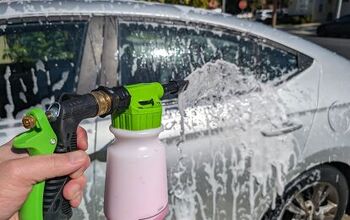


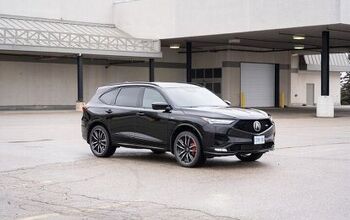
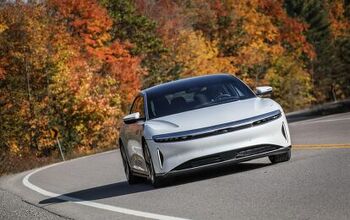


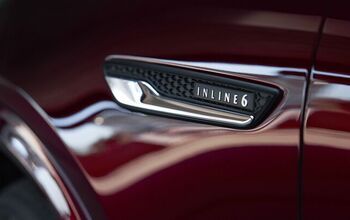
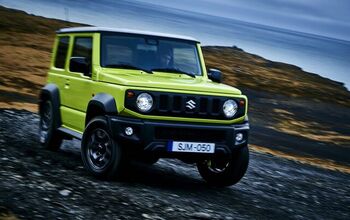
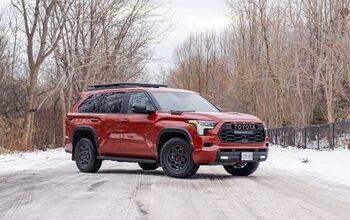
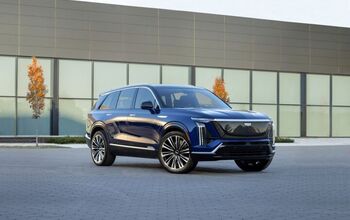
Comments
Join the conversation